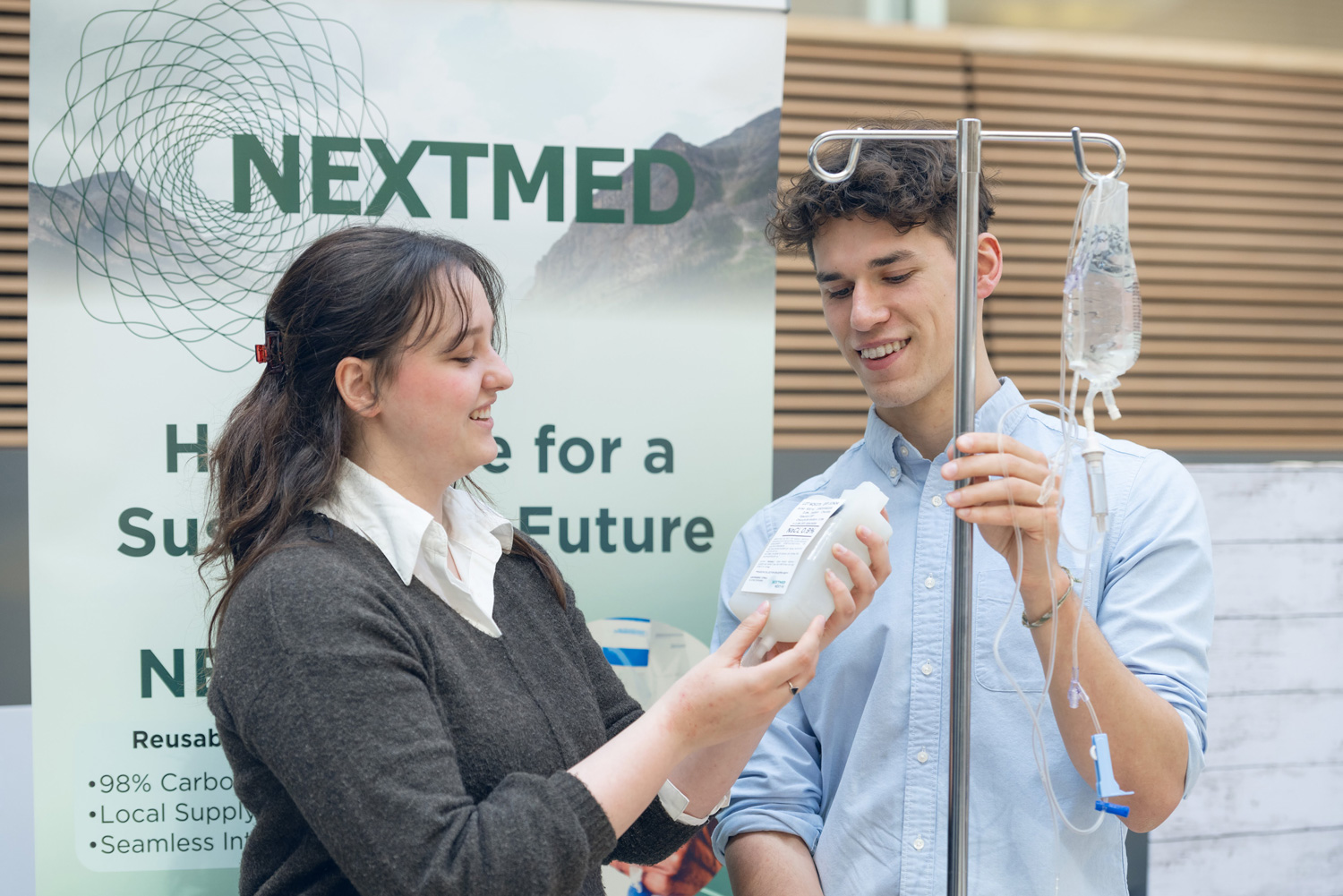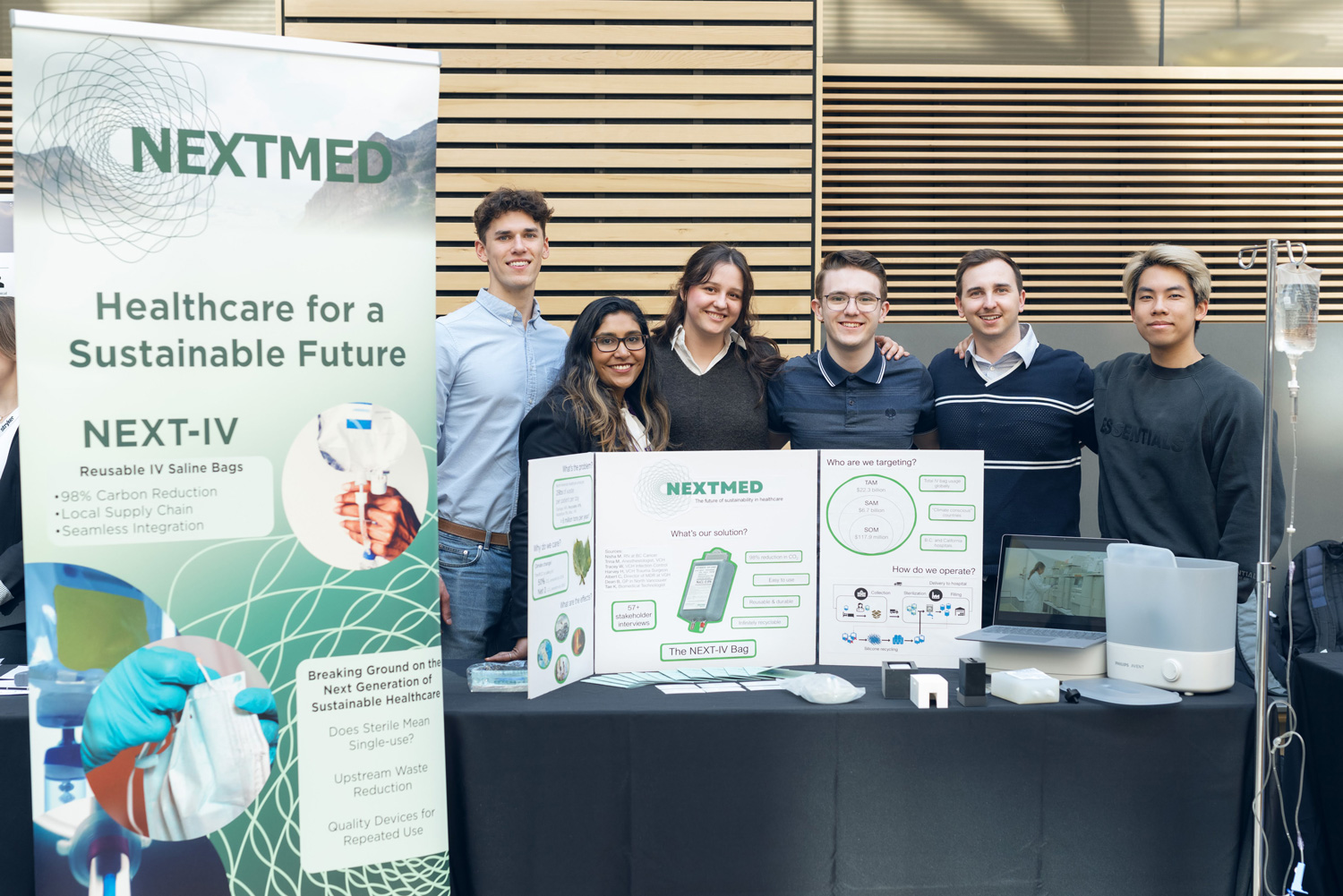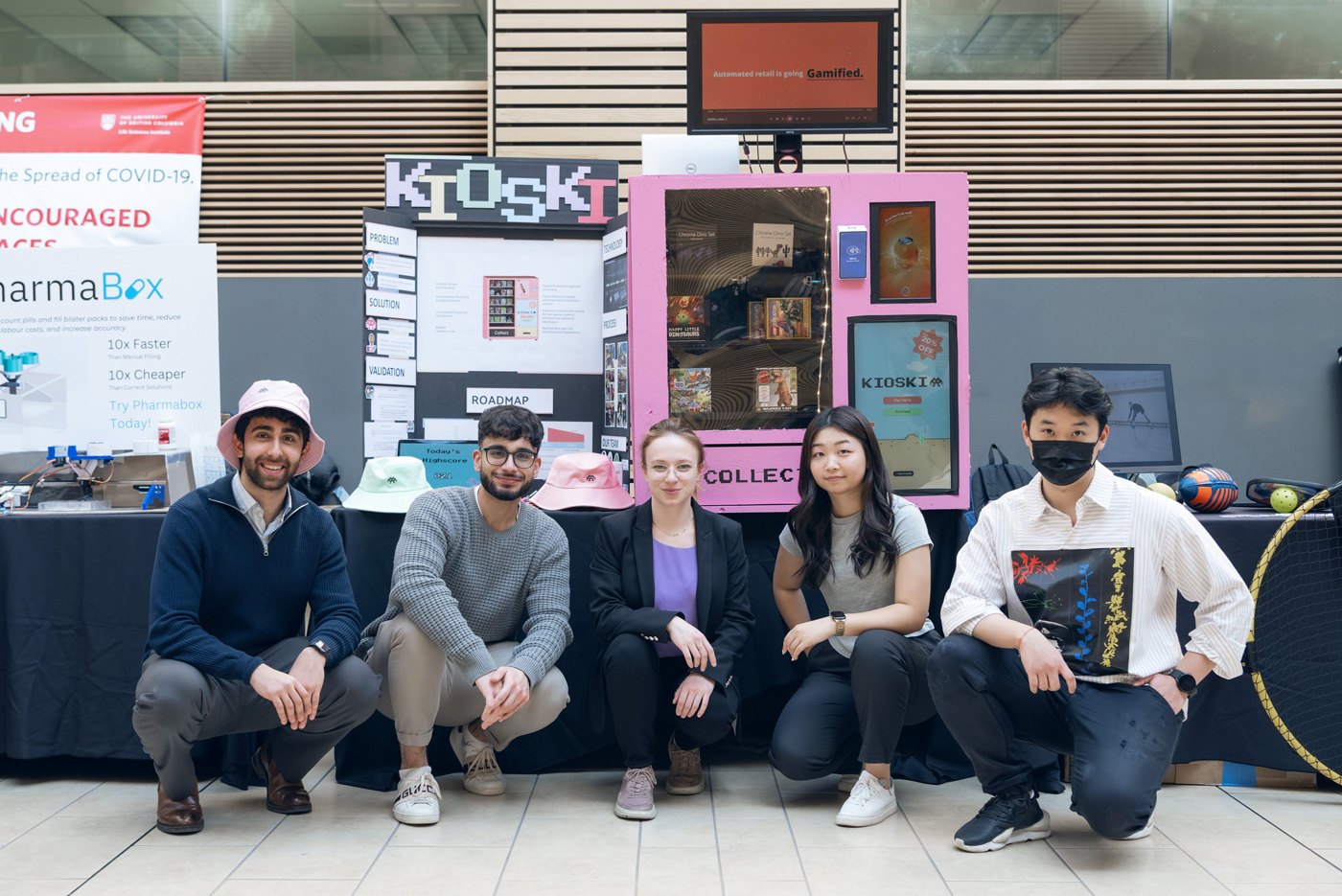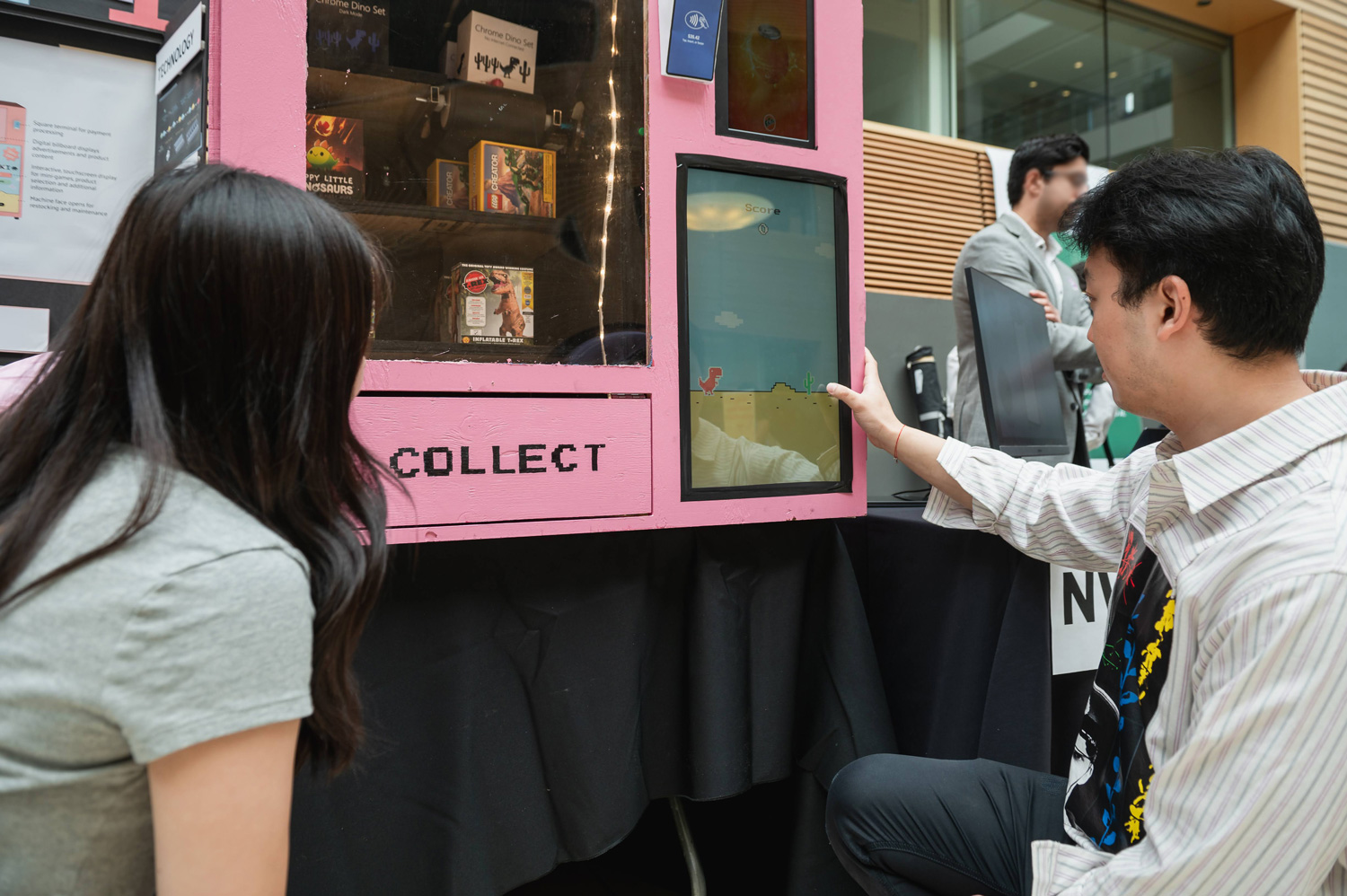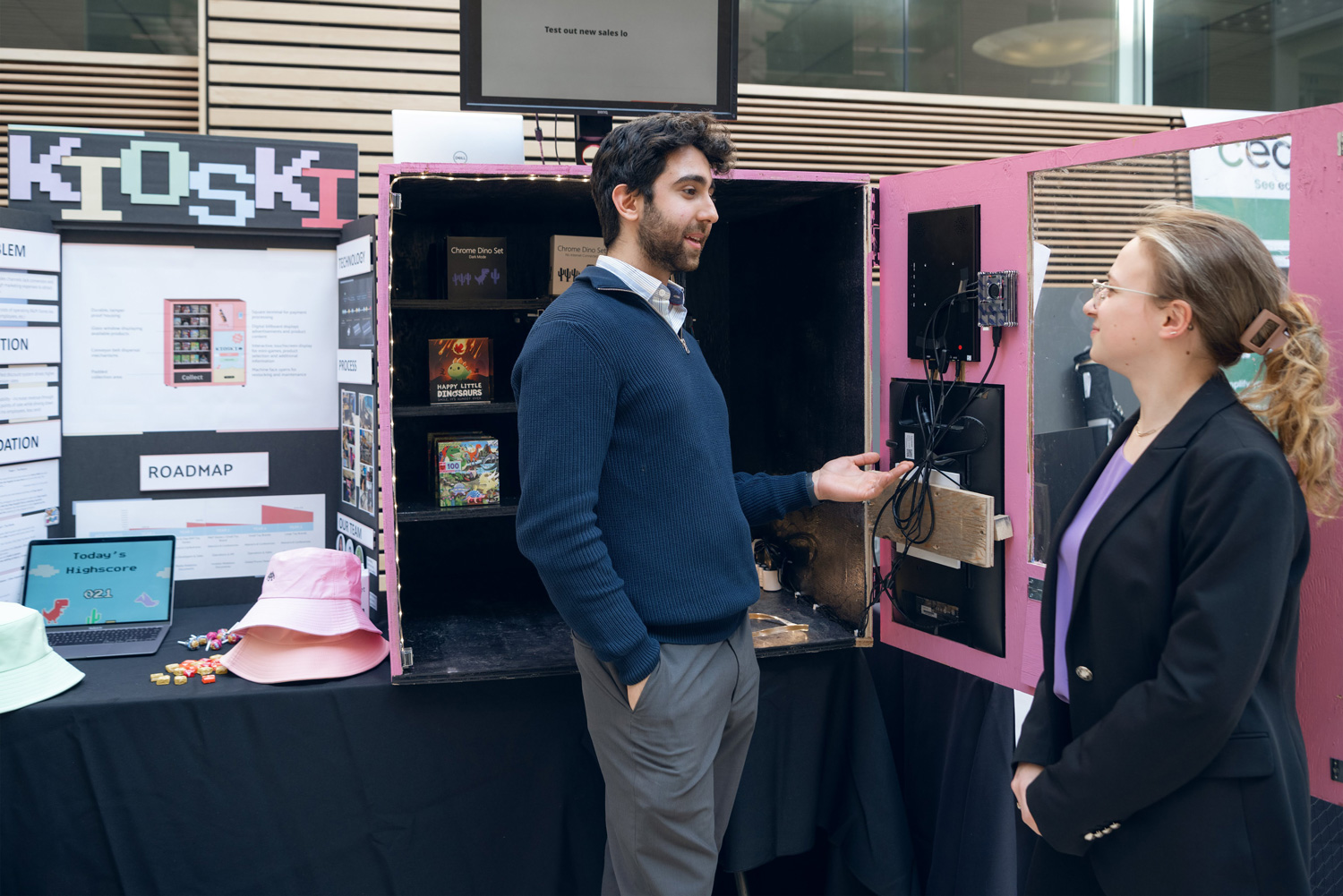
A reusable IV bag and a gamified toy retail machine: New Venture Design student projects shine at annual showcase
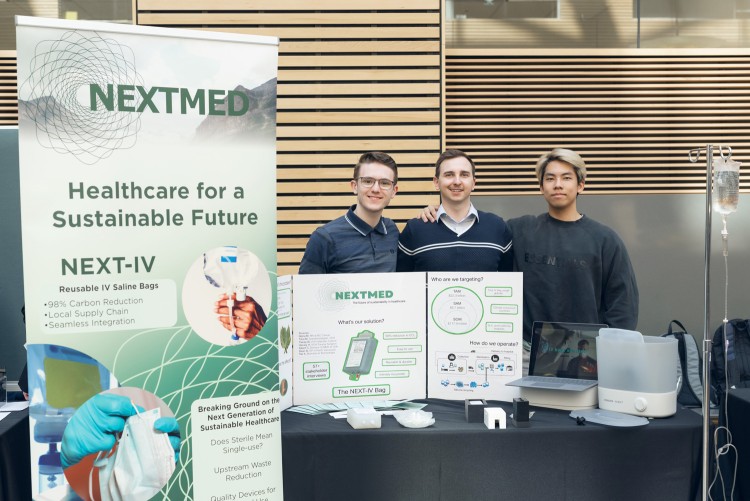
Related Links
The atriums of the Life Sciences Centre on UBC campus were abuzz on Design and Innovation Day on April 11, 2023, with dozens of display booths featuring interactive exhibits and hands-on demonstrations.
UBC Bachelor of Commerce students Samuel Enchelmaier and Sean Kyer are members of team NextMed – the group responsible for developing a prototype for a reusable and sterilizable IV bag.
“NextMed is a sustainable medical device company. Our primary goal is to reduce the amount of single-use medical devices,” says Kyer, who is in his fourth year of the combined major in business and computer science (BUCS). “There is a prevalent mentality throughout health care that once something touches the patient, it needs to be tossed away, and it contributes to a shocking amount of waste.”
Creating a circular lifecycle for medical supplies
Research into the environmental impacts of the health care system has shown that the average U.S. hospital creates 29 pounds of waste per patient bed per day (Eckelman and Sherman 2016).
“Health authorities and governments are aware of the problem and are asking for upstream sustainable solutions and that’s where we come in,” says Kyer.
For Enchelmaier, it’s all about disrupting industries and processes for the benefit of the planet while still offering present-day solutions. “We are focused on sustainable development – this means we are creating a health system that supports the needs of those today, while not compromising the needs of those in the future.”
Supply chain resiliency is another big part of NextMed’s value proposition, says Enchelmaier, a fifth-year student specializing in entrepreneurship with a focus on sustainability and social innovation.
“For me, that was the most compelling need to fulfill. Creating a local supply chain is, in some ways, disaster resilient. Having reprocessing facilities near hospitals lowers the odds of supply chain disruption, which was an issue we witnessed during COVID-19,” says Enchelmaier.
An interdisciplinary team comes together
New Venture Design is a course offered jointly by UBC Applied Science and UBC Sauder and is open to students from all faculties. Course participants work in interdisciplinary teams to develop a business plan and prototype of a new product or process.
Pictured from left to right: Callum Woznow, Aditi Sitolay, Emily Roos, Sean Kyer, Samuel Enchelmaier, and Wilson Cao.
“New Venture Design pulled me towards specializing in entrepreneurship,” says Enchelmaier. “The idea of spending eight months working with a team of very bright individuals to create a solution and fulfill a need blew my mind.”
The business students on the team lent their expertise in validating the early venture idea, overseeing the project management, and developing NextMed’s business plan, financial modelling, and marketing strategy.
Kyer and Enchelmaier say the beauty of working in an interdisciplinary team is that students can contribute in ways beyond their area of study. “Everyone generated ideas for everything; business students generated engineering ideas, and engineering students generated business ideas,” recalls Kyer.
“People are a business’s most valuable resource,” says Enchelmaier. “Without the diverse team we had, something of this magnitude would not have been possible.”
Revolutionizing the toy buying experience
UBC Bachelor of Commerce student Natalie Tsvetkov and her New Venture Design teammates also showed off their creative product, Kioski, with a colourful exhibit at Design and Innovation Day.
Kioski is a one-of-a-kind gamified automated retail machine tailored for the toy industry. It combines the convenience of a standalone retail machine with interactive and touchscreen mini-games.
“It’s essentially a vending machine with a video game on it,” explains Tsvetkov. “Children can play the game and, if they win, use their winning points as a discount of up to 20 per cent to purchase the toy inside.”
The concept would allow smaller toy stores that don’t have the capital to increase their points of sale to experiment with different locations instead of renting out new retail spaces, explains Tsvetkov. For larger household toy brands, the value is in bringing a point of interaction to customers.
As a promising vote of confidence, Kioski has secured two Letters of Intent (LOIs) from major shopping malls in the Vancouver area.
“The malls expressed interest in working towards building that partnership,” says Tsvetkov. “Even though there is still a lot of validation to be done, these LOIs showed us that this is a unique solution which solves a current pain point within the market.”
Making an impact by solving real-world client goals
In addition to Tsvetkov, the Kioski team consists of two business and computer science (BUCS) students, two mechanical engineering students, and one electrical engineering student.
“As a business student, my contributions to the team included a systematic approach to problem solving and data analytics, the construction of financial analysis and prediction models, and the build out of the marketing campaigns,” says Tsvetkov.
One shared experience among everyone, Tsvetkov says, was the fact that New Venture Design encouraged out-of-the-box thinking and showed students what it takes to form an entrepreneurial enterprise.
“New Venture Design facilitates an insane amount of learning in a short period of time. This course is as close to real-life entrepreneurship that you can get in an academic setting,” says Tsvetkov.
As for her highlight from Design and Innovation Day, Tsvetkov says she was struck most by the sheer sophistication and industry applicability of the solutions that were on display.
“A lot of the projects innovated specifically for client goals and used industry metrics. The teams implemented the product based on what people in industry said they needed or the problem they wanted to solve,” says Tsvetkov. “No matter the age or level of expertise, students are capable of accomplishing the goals that people in industry set out and they’re able to make an impact.”
